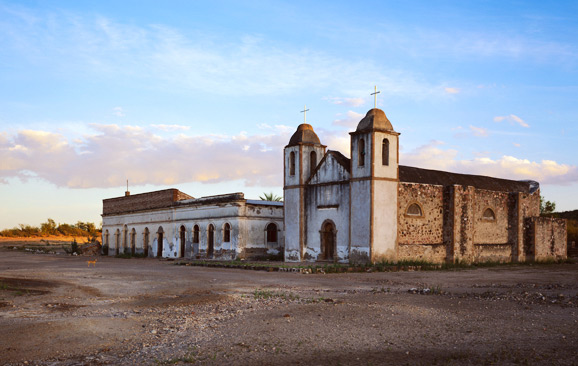“You photograph with all your ideology.”
— Sebastiåo Salgado (Popular Photography, March 2008)
We invite you to take a moment to get to know Leland Foerster, a fine art photographer who has taught for UC San Diego Extension for close to twenty years. His recent projects include: "The Californios," "Taking the Early Bus" and "There is Work." His photographs are in public and private collections including Scripps, Kaiser and San Diego's Museum of Photographic Arts.
How did you get started as a photographer?
My mother and father were both amateur artists. There were easels, paints, cameras, and a darkroom in the homes where I grew up. Creating art was seen as a legitimate activity. My father gave me a camera when I went to Brazil as an exchange student during high school. That early experience kindled my love for making photographs and showing people my work. Photography became an important part of my life (often to the point of distraction) as a Peace Corps Volunteer, graduate student and 4-H Youth Adviser.
In 1974, I had the chance to join a small educational film production company and decided to choose a career in photography instead of fitting photography into other duties. Looking back it was a risky decision to make with a young family, but it turned out to be a great decision.

Mission San Luis Gonzaga. East of of Constitución, Baja California Sur, (c) Leland Foerster
Who is your favorite photographer and why?
There are two.
Elliot Porter, for his choice of subject matter that went beyond breathtaking scenery to making color photographs and dye transfer prints about man’s presence in the natural world, and Sebastiåo Salgado, for his motivation and skill in documenting the human condition with beautiful books and black and white prints about workers of the world.
Seeing Porter’s and Salgado’s prints encouraged me to learn how to make my own fine prints in a traditional, wet darkroom. I continue this quest in my digital darkroom. For me the print is the end point of each memorable photographic experience.
What are your three favorite photography subjects and what was memorable about them?
Stone Legacy, Photographs and Stories of the Historic Stone Churches of Baja California. My yearly expeditions to photograph Jesuit mission sites in remote areas of Baja California were wonderful adventures to discover the history and beauty in and around the old structures—a burning candle, a garden still tended after 250 years, a confessional screen where priest and parishioner communicated, and time worn stone steps leading to a choir loft.
The Baja California Deserts. I loved the routine of two or three week trips with my friend and photographer, Bill Evarts. We bounced along dirt roads in a 4-wheel drive pickup searching for exceptional light on this ragged landscape. Scout, eat and nap in the mid-day. Hike out before sunrise and back after dark to be in position for dawn and dusk photography from some hight point. Then build a mesquite fire, re-load 4x5 film holders inside a black changing bag, tell stories and watch the stars.
The Californios: Stories and Photographs of the Descendants of the Mission Era in Baja California. I have fond memories of long, unhurried trips to visit remote ranches in the mountains around the mission sites in Baja California. I would camp in the back of my truck for three or four days at each ranch. Camera and tripod always within reach, listening to stories, and participating in daily routines With time my hosts would begin to ignore my camera, and I could make photographs. On subsequent trips I would return with work prints to re-do images that fell short, re-tell the stories I had heard, and begin to edit them into book form on the kitchen table with my hosts.

Chema Aguiar with Goats, Rancho Picacho, Sierra de la Giganta, Baja California Sur, (c) Leland Foerster
What was your all-time favorite location to shoot?
I love the Imperial Valley where I photographed for the book, "There is Work, Hay Trabajo," about agriculture and water. Photographing farm workers at dawn and dusk in fields, on harvesters, catfish farms, sheep shearing operations and feedlots are among the best memories of my life.
What are the key elements to include in a robust photography portfolio?
-
Having something of value to say about the human condition
-
Developing a coherent, personal style
-
Paying attention to detail and craftsmanship in the presentation
What are three key pieces of advice you'd give to aspiring photographers?
-
Work on discrete projects with a beginning point and an end point rather than diluting your energy in pursuit of random photographs.
-
Photograph things you know about and care about in a place where you like to be.
-
Choose subjects that allow for repeated access over time so that you can return to your subject to refine your work.
Leland is teaching Nature Photography: From Vision to Print in Spring 2013 (opens for enrollment January 25, 2013).